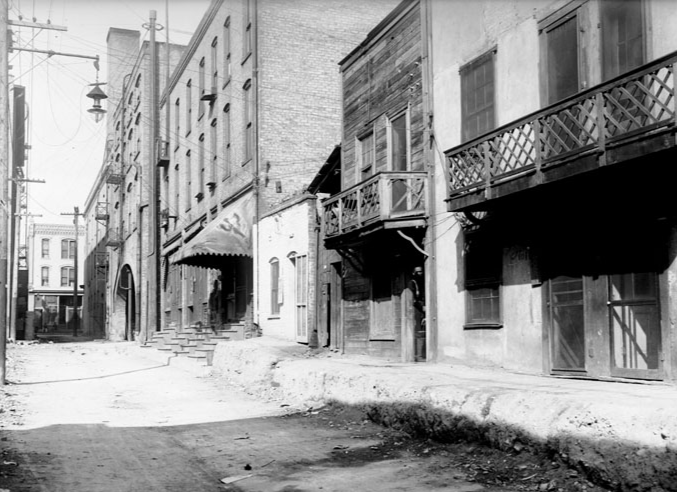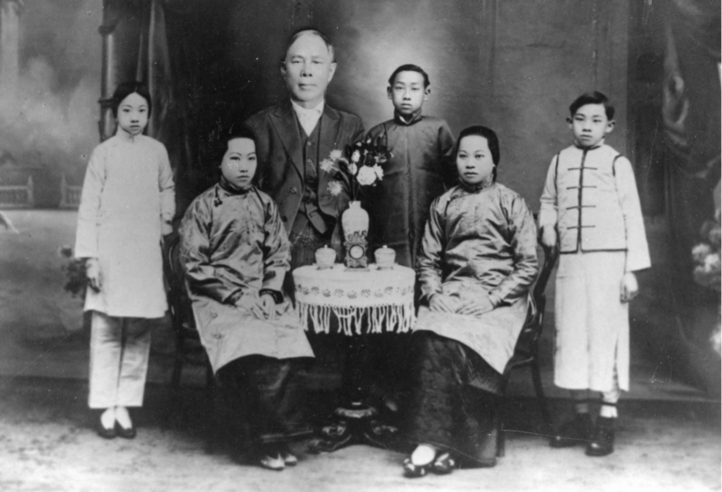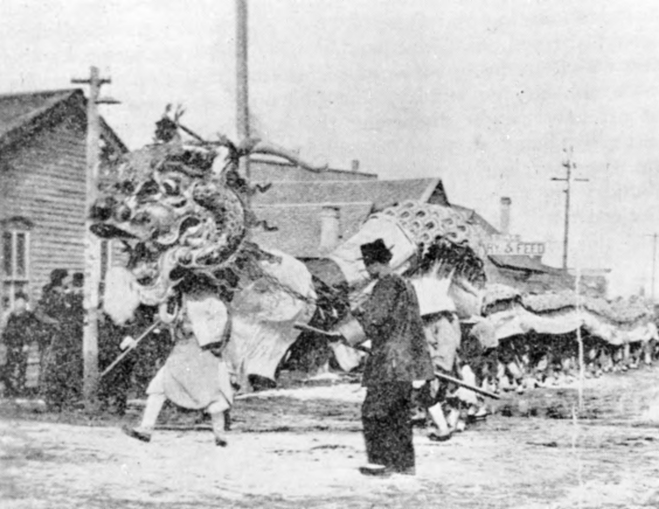Chinese immigrants first left their homeland beginning in the 1840s to seek economic opportunity in the United States.
Push and Pull Factors
China experienced several push factors, including flooding, typhoons, droughts, high taxes, low pay, overpopulation, and a faltering central government. The United States had many pull factors that drew Chinese immigrants to the country, like the California Gold Rush and employment with railroad companies. They left China carrying some of their belongings in straw baskets that they balanced on their shoulders with bamboo poles. Some Chinese immigrants moved to Utah, where they found work and contributed to its cultural, political, and social organization.
Settling

At first, Chinese immigrants lived in temporary houses or canvas tents near the railroad tracks. Because they did not have permanent dwellings, many records like the census do not record their names or presence in Utah. Nevertheless, in 1870, there were 429 Chinese men and sixteen Chinese women in Utah.
Working
The first Chinese immigrants in Utah worked for the Central Pacific Railroad during the 1860s. Chinese immigrant labor was essential to completing the transcontinental railroad in 1869. These rail lines furthered industrialization in the United States. Many workers decided to settle in Utah after the railroad was complete.
During the 1880s, Chinese immigrants moved into other cities in Utah. Some continued to work for railroad companies. Others opened laundries, restaurants, dry goods shops, and boarding houses. Chinese Americans lived in cities, towns, and farms in Utah. Some planted crops in garden plots located in Salt Lake City. Most had to work and live along State Street in Salt Lake City, known as “Plum Alley.” The 1890 census recorded 271 Chinese immigrants living in Salt Lake City. Ogden and Park City also had ethnic enclaves of Chinese immigrants that other Utahns referred to as “Chinatown.”

Building Community
Chinese Americans socialized with one another in several ways. Many attended religious services at different churches. There were several societies and organizations where Chinese immigrants gathered for help with letter writing, other activities, and political involvement. These organizations helped people to form a support network. Chinese Americans and many other Salt Lake City residents attended the Chinese New Year parade every year. People attending the parade during the 1800s saw a 200-foot-long Chinese dragon marching through Salt Lake City. Chinese American Utahns held the dragon over their heads while marching in a row to make it look like the dragon was alive.
Fighting Discrimination
Chinese American immigrants faced severe discrimination in Utah and the rest of the United States. In 1882, Congress passed the Chinese Exclusion Act, which prevented people from immigrating to the United States. The act also denied citizenship to Chinese immigrants already living in the United States. Chinese immigrants could not vote in local, state, territorial, or national elections or marry non-Chinese immigrants. Some lawmakers created new identification forms only for Chinese immigrants to complete. In Utah, some citizens and residents discriminated against Chinese Americans by refusing to rent rooms, apartments, or homes to them. After Utah became a state in 1896, many Utahns declined to take their laundry to Chinese-owned businesses. They hoped to drive Chinese immigrants from Utah by not paying for their services.

Today
Chinese Americans continued to live, work, and worship in Utah throughout the twentieth and into the twenty-first century. Many served in the military during World War II. After Congress repealed the Chinese Exclusion Act in 1943, many Chinese immigrants and their families became citizens.
The Chinese-owned businesses located on Plum Alley were replaced during the 1950s with a parking garage. The original Plum Alley businesses may be gone, but many Chinese Americans still live in Salt Lake City. Today, Salt Lake City has another Chinatown located at 3390 South State Street. Chinatown features several Chinese-American-owned restaurants along with some Korean and Vietnamese eateries and several grocery stores.
Keep Exploring!
Return to the Communities page here.
Return to the I Love Utah History home page here.